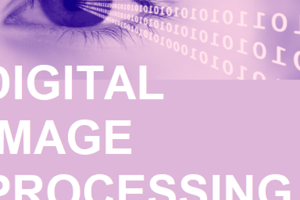Podcast
Questions and Answers
What does image classification involve?
What does image classification involve?
- Assigning a label to an entire image based on its content (correct)
- Dividing an image into parts and classifying each part
- Locating and classifying objects within an image
- Enhancing or manipulating images for analysis
Which technique is particularly effective for image-related tasks in computer vision?
Which technique is particularly effective for image-related tasks in computer vision?
- Reinforcement Learning
- Decision Trees
- Convolutional Neural Networks (CNNs) (correct)
- Support Vector Machines
Which of the following is NOT a key concept in computer vision?
Which of the following is NOT a key concept in computer vision?
- Data Mining (correct)
- Feature Extraction
- Image Processing
- Object Detection
What is the role of transfer learning in computer vision?
What is the role of transfer learning in computer vision?
What is a common challenge faced in computer vision applications?
What is a common challenge faced in computer vision applications?
Which application of computer vision involves using cameras and sensors to navigate?
Which application of computer vision involves using cameras and sensors to navigate?
Which technology uses two neural networks to generate new images?
Which technology uses two neural networks to generate new images?
What future trend in computer vision aims to improve the efficiency of applications?
What future trend in computer vision aims to improve the efficiency of applications?
Flashcards are hidden until you start studying
Study Notes
Computer Vision
-
Definition: A field of artificial intelligence that enables computers to interpret and understand visual information from the world.
-
Key Concepts:
- Image Processing: Techniques to enhance or manipulate images for analysis (e.g., filtering, edge detection).
- Feature Extraction: Identifying and describing key attributes of images, such as shapes and textures.
- Object Detection: Locating and classifying objects within an image or video (e.g., YOLO, SSD algorithms).
- Image Classification: Assigning a label to an entire image based on its content (e.g., identifying cats vs. dogs).
- Semantic Segmentation: Dividing an image into parts and classifying each part (e.g., differentiating foreground from background).
-
Applications:
- Autonomous Vehicles: Using cameras and sensors to navigate and respond to the environment.
- Medical Imaging: Analyzing X-rays, MRIs, and CT scans for diagnosis.
- Facial Recognition: Identifying or verifying individuals based on facial features.
- Augmented Reality: Integrating digital information with the real world through visual overlays.
-
Techniques:
- Convolutional Neural Networks (CNNs): A deep learning architecture particularly effective for image-related tasks.
- Transfer Learning: Reusing pre-trained models on new tasks to save time and resources.
- Generative Adversarial Networks (GANs): Using two neural networks to generate new images based on learned distributions.
-
Challenges:
- Variability: Handling changes in lighting, perspective, and occlusions in images.
- Data Quality and Quantity: Need for large, diverse datasets for training effective models.
- Interpretability: Understanding how models arrive at decisions can be complex.
-
Future Trends:
- Real-time Processing: Enhancing the speed and efficiency of computer vision applications.
- Integration with Other AI Fields: Combining computer vision with natural language processing for more contextual understanding.
- Ethical Considerations: Addressing privacy concerns and biases in image recognition systems.
Definition
- Field of artificial intelligence focused on enabling computers to interpret and understand visual information.
Key Concepts
- Image Processing: Techniques like filtering and edge detection improve image analysis.
- Feature Extraction: Involves identifying important attributes (shapes, textures) in images.
- Object Detection: Techniques like YOLO and SSD locate and classify objects within images or videos.
- Image Classification: Assigns labels to entire images based on their content, such as distinguishing between cats and dogs.
- Semantic Segmentation: Divides images into segments and classifies each part, such as separating foreground from background.
Applications
- Autonomous Vehicles: Utilize cameras and sensors to navigate and respond to their environment.
- Medical Imaging: Analyze X-rays, MRIs, and CT scans to assist with diagnoses.
- Facial Recognition: Identify or verify individuals by their facial features.
- Augmented Reality: Combines digital information with the real world through visual overlays.
Techniques
- Convolutional Neural Networks (CNNs): A powerful deep learning architecture designed for image-related tasks.
- Transfer Learning: A strategy of using pre-trained models for new tasks, saving time and resources.
- Generative Adversarial Networks (GANs): Employs two neural networks to create new images from learned data distributions.
Challenges
- Variability: Addresses issues stemming from changes in lighting, perspective, and occlusions.
- Data Quality and Quantity: Requires large, diverse datasets to train effective models.
- Interpretability: Understanding model decision-making processes is often complex.
Future Trends
- Real-time Processing: Focus on improving speed and efficiency of computer vision applications.
- Integration with Other AI Fields: Merging computer vision with natural language processing for enhanced contextual understanding.
- Ethical Considerations: Need to tackle privacy issues and biases within image recognition systems.
Studying That Suits You
Use AI to generate personalized quizzes and flashcards to suit your learning preferences.




